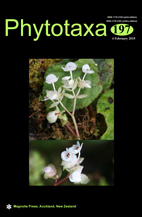Abstract
Cytospora species are important phytopathogens causing severe canker disease with a worldwide distribution and broad host range. However, identification of taxa to species level is difficult due to poor phylogenetic understanding and lack of sequenced type species. Morphological and phylogenetic studies have been carried out on several important hosts such as Eucalyptus and Malus in China, Iran, and South Africa. In this study destructive canker diseases of the anti-desertification plants, Elaeagnus angustifolia, Hippophae rhamnoides, and Salix psammophila, were investigated in northwest China. Multilocus phylogenetic analyses of ITS, nrLSU, RPB2, and ACT gene regions, combined with detailed morphological analyses and comparison with ex-type strains revealed six Cytospora species, C. chrysosperma, C. elaeagni, C. hippophaes, C. nivea, C. populina comb. nov. and C. gigaspora sp. nov. causing cankers on these hosts. The novel species C. gigaspora has flat multiple locules with a conceptacle and unusually long 12 µm conidia. Detailed descriptions and molecular data for the Cytospora species causing cankers on the three psammophilic host plants are provided. Cytospora elaeagni and C. hippophaes have previously been recorded from Elaeagnus angustifolia and Hippophae rhamnoides, whereas the other species causing Cytospora canker of Elaeagnus angustifolia and Salix psammophila are new records.

